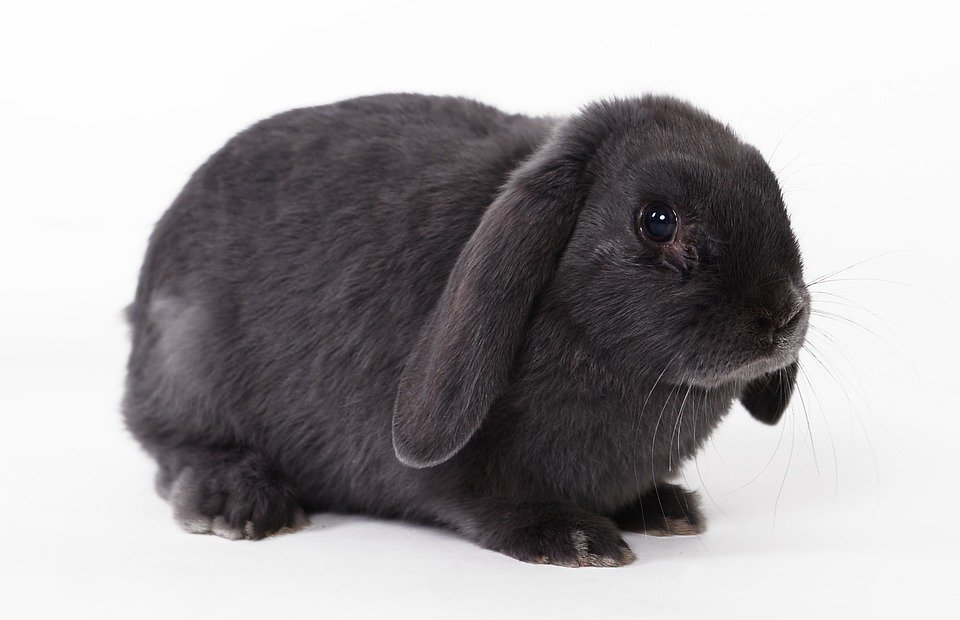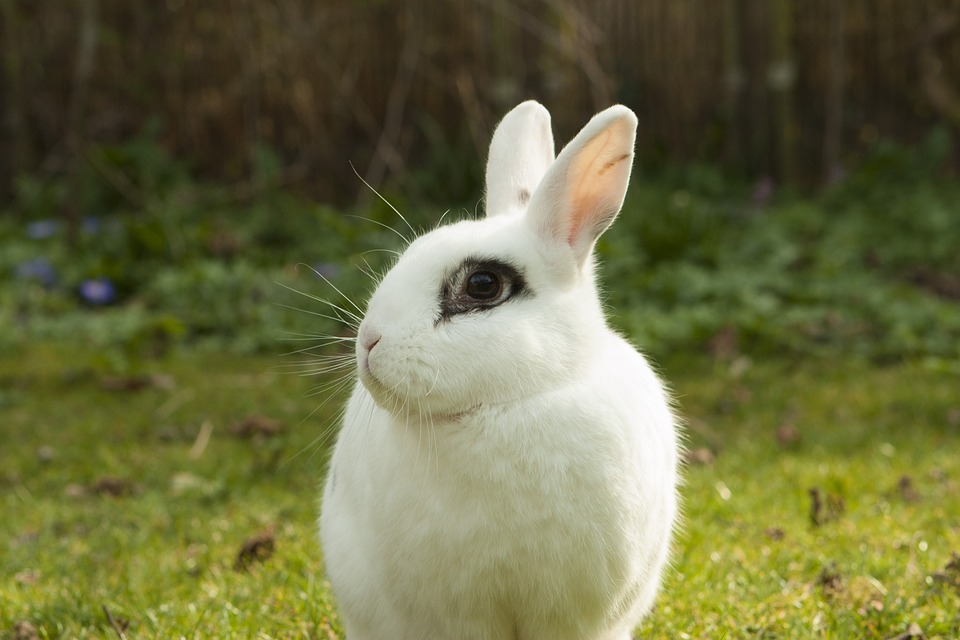This article delves into the intriguing, yet often misunderstood, question of whether cats and rabbits can mate. We'll explore the biological reasons behind why interspecies breeding between these two creatures is simply impossible, focusing on the distinct differences in their genetic makeup and reproductive systems. We'll also unravel the common misconceptions surrounding this topic, dispelling myths about hybrid animals and offering a clear understanding of the scientific realities. Additionally, we'll discuss the ethical implications of forced interspecies breeding, emphasizing the risks and dangers involved for the animals.
Part 1: Understanding the Biological Differences

1.1 A Tale of Two Species
The domestic cat, Felis catus, belongs to the Felidae family. They are obligate carnivores, meaning their diet must consist of meat. Their anatomy reflects this dietary need, with sharp teeth, retractable claws, and a powerful musculature for hunting.
On the other hand, the European rabbit, Oryctolagus cuniculus, belongs to the Lagomorpha order. Unlike cats, rabbits are herbivores with a unique digestive system adapted for consuming plant matter. They are known for their large incisor teeth and specialized gut bacteria that help them break down cellulose.
1.2 Genetic Incompatibility: The Foundation of Difference
Chromosomes: Cats possess 38 chromosomes, while rabbits have 44. This fundamental difference in their genetic makeup prevents the successful fusion of their gametes (sperm and egg).
Reproductive Systems: Cats have a bicornuate uterus, meaning it has two horns, while rabbits possess a single, bicornuate uterus. This structural difference, combined with the genetic incompatibility, makes fertilization and embryo development practically impossible.
Physiological Barriers: Beyond genetics, the physical differences in reproductive organs, hormone profiles, and mating behaviors further solidify the impossibility of interspecies breeding.
Part 2: Unveiling the Myths: The "Cat-Rabbit Hybrid"

2.1 A Fictional Fantasy
The idea of a cat-rabbit hybrid is entirely fictional, fueled by artistic license and creative imaginations. Often portrayed in movies, books, and cartoons, these hybrid creatures are a product of fantasy, not scientific reality.
2.2 The Scientific Reality: Species Boundaries
Evolutionarily, cats and rabbits have diverged significantly over millions of years, developing distinct species with unique biological features. This evolutionary distance creates a chasm between their genetic makeup, making interspecies breeding, even with human intervention, simply impossible.
Part 3: The Ethical Implications: Exploring Forced Interspecies Breeding
3.1 Animal Welfare Concerns
Pain and Suffering: Attempting to force interspecies breeding is not only scientifically impossible but also cruelly unethical. The stress, physical trauma, and potential harm inflicted on the animals involved would be severe and inhumane.
Genetic Abnormalities: Even if hypothetically possible, the offspring resulting from such forced breeding would likely suffer from serious genetic abnormalities. These could lead to debilitating health issues, shortened lifespans, and a host of other problems.
3.2 A Violation of Nature's Laws
From an ethical perspective, forcing animals to breed across species boundaries is a transgression against natural processes. It disregards the intrinsic rights of animals and prioritizes human curiosity or entertainment over animal well-being.
Part 4: Debunking Common Misconceptions
4.1 The "Liger" and Other Hybrids
While some interspecies hybrids, such as the liger (lion-tiger), exist in captivity, these are rare exceptions. They often arise due to human intervention and are often associated with health complications, demonstrating the inherent risks associated with forced interbreeding.
4.2 The "Cat-Rabbit Hybrid" in Popular Culture
The persistent idea of a "cat-rabbit" hybrid in popular culture, often depicted as a charming, fluffy creature, perpetuates the misconception that interspecies breeding is possible. This is a misrepresentation of the scientific realities and can contribute to a lack of understanding regarding animal biology and ethics.
Part 5: The Importance of Scientific Literacy
5.1 Combating Misinformation
It is crucial to combat misinformation surrounding interspecies breeding by relying on scientific evidence and critical thinking. This ensures a deeper understanding of the natural world and allows for more responsible and informed decisions regarding animal welfare.
Part 6: Promoting Responsible Pet Ownership
6.1 Educating Yourself
Understanding the Needs of Your Pet: Learning about the biological characteristics and needs of your chosen pet is essential for responsible pet ownership. This includes understanding their diet, exercise requirements, and social interactions.
Avoiding Forced Breeding: Understanding the ethical implications of forced breeding helps to prevent harmful practices and ensures the well-being of animals.
Part 7: Ethical Considerations Beyond Breeding
7.1 Animal Welfare in Research
Even without interspecies breeding, ethical considerations are vital in animal research. Research involving animals must adhere to strict guidelines that prioritize animal welfare, minimizing pain and suffering.
7.2 The Importance of Conservation
Understanding species boundaries is crucial for conservation efforts. By recognizing the unique adaptations of each species, we can develop targeted conservation strategies that protect their habitats and ensure their survival.
Part 8: FAQs
8.1 Can cats and rabbits mate?
No, cats and rabbits cannot mate due to fundamental differences in their genetic makeup, reproductive systems, and physiological structures.
8.2 Are there any known cases of cat-rabbit hybrids?
No, there are no documented cases of successful interspecies breeding between cats and rabbits. Any claims of cat-rabbit hybrids are purely fictional.
8.3 Why are there so many myths about cat-rabbit hybrids?
The idea of a cat-rabbit hybrid is often used in fiction and popular culture, creating a misconception that such creatures exist.
8.4 What are the ethical concerns surrounding forced interspecies breeding?
Forced interspecies breeding raises ethical concerns regarding animal welfare, as it inflicts pain, suffering, and potential genetic abnormalities on the animals involved.
8.5 What can I do to protect animal welfare?
Educate yourself about responsible pet ownership, avoid promoting misinformation, and support organizations that advocate for animal welfare.
8.6 What is the significance of understanding species boundaries?
Understanding species boundaries helps us appreciate the diversity of life on Earth, guide conservation efforts, and ensure the ethical treatment of animals.
8.7 How can I learn more about animal biology and ethics?
Consult reputable scientific sources, visit zoos and wildlife sanctuaries, and support organizations that promote animal welfare and scientific literacy.
Everyone is watching
-

Do Rabbits Lay Eggs? (The Surprising Truth)
OTHER TYPES OF PETSThis article will unravel the common misconception that rabbits lay eggs, exploring the fascinating world of r...
-

Can Rabbits Eat Grapes? A Guide to Safe Rabbit Treats
OTHER TYPES OF PETSThis comprehensive guide will explore the safety and suitability of grapes for rabbits, providing detailed inf...
-

What's a Group of Rabbits Called? (A Comprehensive Guide)
OTHER TYPES OF PETSThis article delves into the fascinating world of rabbits, exploring the various terms used to describe a grou...
-

Predators That Hunt Rabbits: A Guide to Natural Enemies
OTHER TYPES OF PETSI've always been fascinated by the circle of life, that delicate dance between predator and prey. Growing up ...
-

Are Rabbits Nocturnal Animals?
OTHER TYPES OF PETSThe question of whether rabbits are nocturnal animals is a fascinating one, with a surprisingly complex answer...
